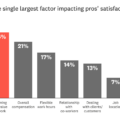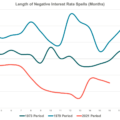Residential Trades Employment and Wages are Both Up Despite Shrinking GDP
Key Takeaways
- Even though real GDP contracted in the first quarter triggering recession fears, residential specialty trades contractor employment stayed even month over month and is 5% higher than before the pandemic.
- Trades wages are now up over 9% since the start of the pandemic to an average of nearly $35 an hour
- Total wages paid in the industry have risen 15% since the onset of COVID and the residential home spending boom.
Shrinking GDP and Growing Concerns about Recession
Real GDP shrunk 1.4% in the first quarter of this year, triggering concerns about a recession. Despite shrinking gross domestic product, the gross wages paid in the residential construction sector remains a bright spot.

Total payrolls remained even in April, at 5% higher than the start of the pandemic (the rest of the economy is still nearly 1% lower than before the pandemic). On top of that, wages are continuing to rise, and now sit at an average in the construction sector of $34.34, 9% higher than February of 2020 and $1.78 an hour higher than last year.
tl;dr: More People, Higher Wages, Greater Economic Impact
The combination of higher payrolls and higher wages means the total earned output of the sector is 15% higher since pandemic onset, closely matching our estimates of the growth in consumer spending, and far outpacing the increase in GDP of only 4.1%. In typical economic cycles some economists like to note that housing can lead the way out of recession. In this one, housing remains a relative bright spot before any possible recession even hits.







 Press & Media Inquiries
Press & Media Inquiries Angi Economics
Angi Economics